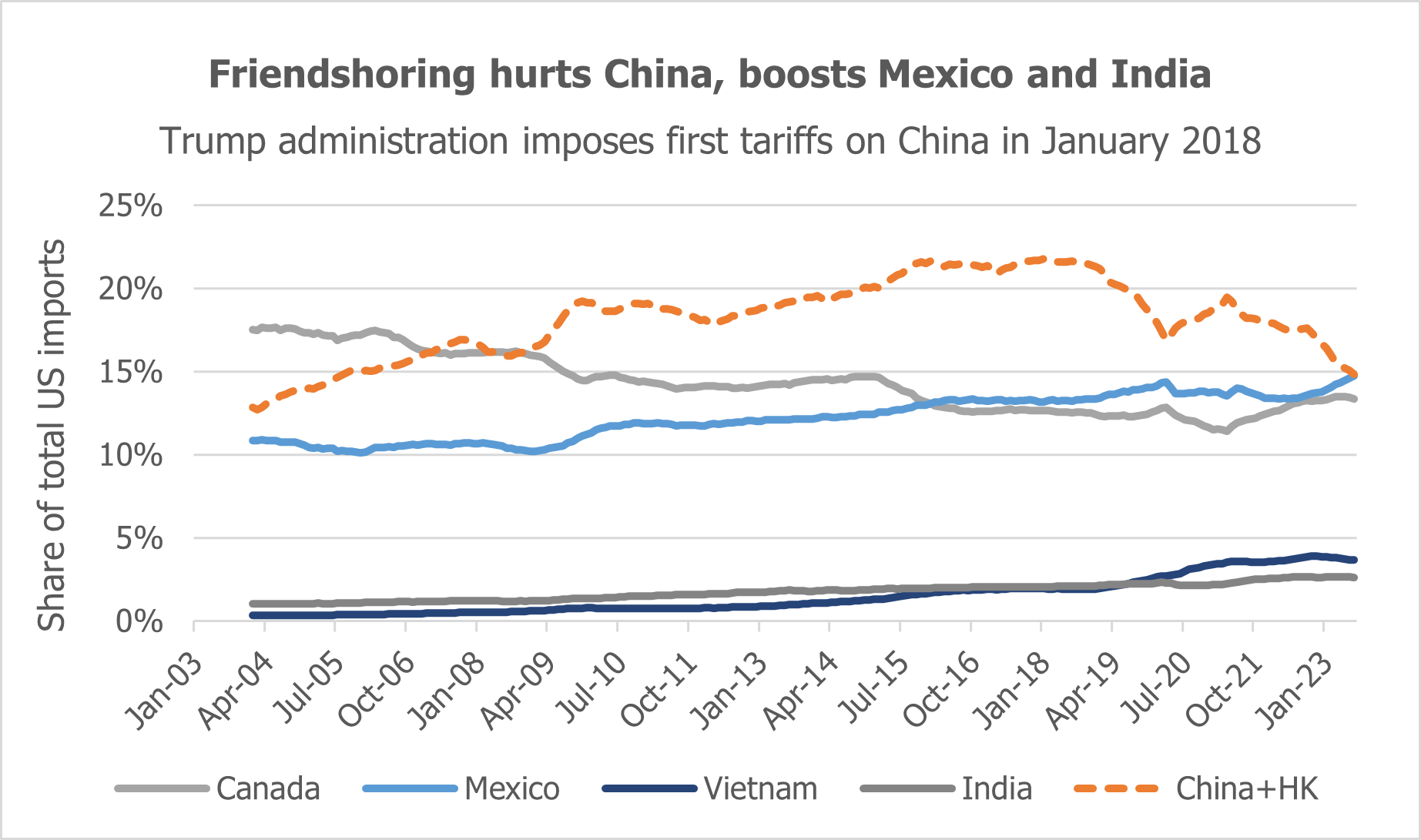From China’s economic challenges to the future of Asian exports, discover how Indonesia and India are changing the game in East Asian economies.
Key Points
- Global trade is growing more slowly than the world economy
- China’s loss of market share of US imports is a major part of this trend
- Asia’s long-term economic success has been largely built on manufacturing exports, but recent developments are challenging this
- However, some economies, notably Indonesia and India, are pursuing alternative paths to growth. We view these strategies as effective at present and are overweight in both markets.
The World Bank’s October 2023 economic outlook for East Asia contains some stark views. It highlights the weakness of the Chinese economy and an ongoing slowdown in Asian exports. The Bank forecasts that GDP in the region is set to grow at 4.5%. This would represent relatively weak growth for the region compared to its history (other than short-term shocks such as the 1970s oil crisis, the 1990s Asian financial crisis and COVID).
To what extent is this view borne out in other data we see, and how is the portfolio positioned as a result?
We do see a continued trend of weak growth in China. The combination of tighter monetary and fiscal policies, intervention in the private sector, and the lingering effects of COVID have resulted in a slowdown in several key Chinese economic indicators. Year-to-date property investment is -8.8% in the year to August, twelve- month trailing USD exports are -5.4% in the year to August and manufacturing PMIs hover just above 50. Retail sales and industrial production have been picking up, increasing to +4.6% and +4.5% respectively, in the year to August. However, forward GDP growth forecasts for China, as issued by both multilateral institutions like the World Bank and from the private sector, continue to be downgraded.
One of the drags on economic growth in China, as well as in Asia more broadly, is the state of global trade (as discussed on page 2 of the World Bank’s September 2023 global update). International trade in goods has been growing at a slower pace than industrial production in recent quarters – an unusual pattern and one with significant implications in Asia. This is largely due to increased frictions on trade in manufactured goods, such as tariffs and non-tariff barriers.
China is the world’s largest exporter, and the US is the world’s largest importer, but trade between the two has been under stress since the Trump administration first imposed tariffs on Chinese exports of solar panels and washing machines in 2018. Since then, China’s share of US imports has declined from 21.4% to 14.7% in the five years leading up to July 2023. In absolute value, the decline has gone from USD 47 billion per month to USD 36 billion per month.

This loss of market share comes against a backdrop of a lower trade intensity within the US economy. Since July 2018, US imports have increased by 17.9% in USD terms, while the overall size of the US economy has grown by 31.5%. With a weaker Chinese economy and a lower intensity of trade in the US economy, major Asian exporters are showing stress. In the year to August 2023, Korean exports were down 8.4%; Taiwanese exports were down 7.3%; Singapore’s non-oil exports were down 20.1% and Thailand’s exports were down 1.8%.
Much of Asia’s long-term economic success has been built on a manufacturing export- led model, and we largely see the traditional Asian export economies as more challenging from an equity investment viewpoint. We are underweight China, Korea, Taiwan and Thailand, seeing weak growth in all four.
However, some Asian economies have pursued different growth paths. Indonesia is a major exporter of commodities, including nickel, coal, oil and gas, and foodstuffs, while India has been succeeding at services exports – Indian services exports were up 8.4% YoY in August 2023. Further, these large, sub-continental economies are more driven by domestic demand than exports, and domestic demand growth remains robust in both.
Whilst Asia’s long-term growth model has largely been built on manufacturing exports, that is not the only path to growth. At present, we see other models as creating better growth opportunities, and Indonesia and India are our only overweight country positions in East and South Asia.
Source for all data JOHCM/Bloomberg (unless otherwise stated).
